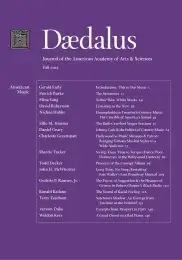Hollywood as Music Museum & Patron: Bringing Various Musical Styles to a Wide Audience
The role of Hollywood films in holding up a mirror–albeit sometimes a distorted one–to the American public is indisputable. Less discussed is their role in bringing a wide range of music–popular, classical, jazz, avant-garde, ethnic–to an unsuspecting audience. Whether the music is in the foreground, as in biographical movies about composers, for example, or in the background supporting the narrative, watching a movie educates the viewers’ ears. Indeed, the role of movies in widening the public’s aural palate has parallels with the role of art museums in broadening the public’s visual taste. To supply the music needed for movies, Hollywood studios have employed a large number of composers of the most varied backgrounds, taking on a significant function as patron of contemporary music. This essay briefly examines some of the varied interactions of movies, music, and the public.
The Hollywood film industry plays a crucial role in the preservation and dissemination of music of many styles. This role is not much discussed, however, because it is an unintended side effect of most Hollywood films, the primary aim of which is commercial success. Nevertheless, despite differences in stated or inherent aims, and despite differences in financial structure, the effect that Hollywood studios have on the American public with regard to music is surprisingly similar to the effect the great museums have with regard to art.
The first two major art museums in the United States, the Metropolitan Museum of Art in New York City and the Museum of Fine Arts in Boston, opened their doors in the same year, 1870. From the outset, they were committed to the education, enlightenment, and one might say elevation of a democratic populace. In her study of American art museums, Nancy Einreinhofer recounts how during “the opening ceremony of the Museum of Fine Arts, Boston’s mayor described the city’s museum as ‘The . . .
